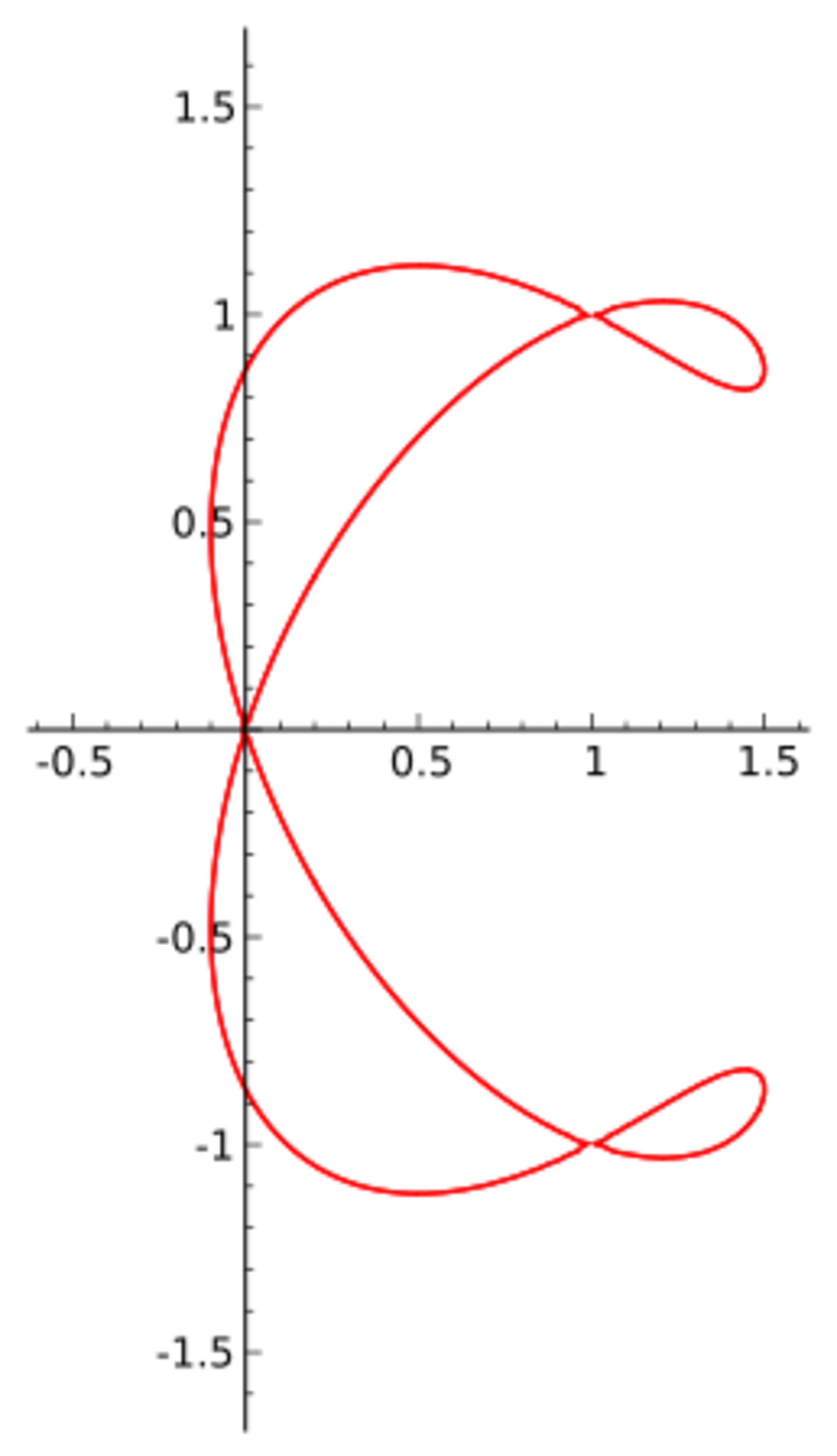Fit that Curve; The End
Find the largest positive integer such that we can fit infinitely many quartic curves through any points in .

The figure shows a special quartic known as an Ampersand Curve
Picture credit: Krishnavedala, Wikimedia Commons
This section requires Javascript.
You are seeing this because something didn't load right. We suggest you, (a) try
refreshing the page, (b) enabling javascript if it is disabled on your browser and,
finally, (c)
loading the
non-javascript version of this page
. We're sorry about the hassle.
Given 2 1 n ( n + 3 ) arbitrary distinct points, a n th order plane curve can always be found to pass through all of them. Hence, with 2 1 n ( n + 3 ) − 1 fixed points, the last point, being a variable, can be used to define an infinite family of n th order plane curves passing through all the fixed points. For quartics, n = 4 , and so the answer is 1 3 .